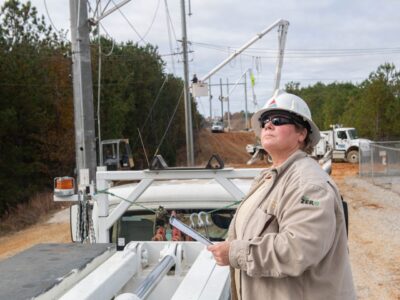As children prepare to return to school, energy use in educational buildings is skyrocketing. According to the U.S. Energy Information Administration, in 2018, schools ranging from preschools to colleges accounted for 13% of commercial buildings’ energy consumption. Energy Star adds that this translates to more than $8 billion in annual energy costs for K-12 school districts, and MidAmerican Energy estimates that the average K-12 school in the Midwest faces yearly energy costs of more than $30,000. Energy-efficient options provide solutions that lessen grid demand and save schools money that can be better used on resources for students.
Schools across the U.S. are increasingly adopting clean energy resources and energy-efficient technologies, particularly solar solutions, according to Generation180. As of the start of 2024, almost 9,000 K-12 schools were using solar power, attended by more than 6.2 million students, equating to one-ninth of K-12 students. Over the past decade, solar capacity at these schools has grown by 400%. During the 2022-2023 school year in particular, more than 800 schools added solar systems. “That is the equivalent of more than one school going solar every day for the last two years!” Generation180 wrote. Currently, these school solar systems prevent 1.7 million metric tons of carbon emissions per year, but if every K-12 school in the U.S. followed suit, that could increase to 60 million metric tons.
The states with the most solar-powered schools include California, New Jersey, Illinois, Arizona, Connecticut, New York, Massachusetts, Wisconsin, Florida, and Maryland. However, Hawaii has the highest percentage of solar schools at 30%, with Washington, D.C., Vermont, and Nevada also in the top ten. Meanwhile, Virginia, North Carolina, Arkansas, and Indiana also find themselves in the top ten states for solar school growth.

Photo Courtesy Generation180
Some states have supported solar with friendly policies. In 2021, the Minnesota State Legislature created the Solar for Schools grant program, which launched in 2022 under the Minnesota Department of Commerce Division of Energy Resources. Since then, the program has awarded grants to 92 schools in the state and is on track to almost double the number of schools using solar over three years.
Meanwhile, last July, Pennsylvania passed the Solar for Schools Act, creating its own grant program to help schools install solar. “By working with legislators representing both parties, we were able to achieve meaningful reform for Pennsylvania. I’m happy we fully focused on what is best for Pennsylvania students and taxpayers so we can access federal grant money to help fund the solar panels that will reduce costs,” explained state Sen. Camera Bartolotta (R-PA-46).

Photo Courtesy Rep. Elizabeth Fiedler
Other schools are rapidly adopting electric buses. According to the World Resources Institute (WRI), in the past five years, the number of buses delivered or currently operating has increased from 415 electric buses transporting 21,000 students in 2020, to over 5,200 electric buses transporting 265,000 students today. In the same time, the number of committed electric buses – or those that have been awarded funding, ordered a bus, had a bus delivered, or are currently operating a bus – has increased from 1,226 to 13,879, spanning 1,551 school districts, compared to 303 five years prior. These committed buses span 49 states, Washington, D.C. four territories, and some Tribal nations, which will serve more than 15.4 million students.
Electric bus adoption has occurred across a broad swath of regions and political leanings. While 87% of electric school buses were located on the West Coast, primarily California, five years ago, the West now accounts for only 33%, trailed by the South at 31%, the Northeast at 21%, and the Midwest at 15%. The trend has bipartisan support, as well. Plus, while only 32% of districts with these buses were red in 2020, that percentage rose to 51% by last year. WRI’s Electric School Bus Initiative data shows that seven states – California, Connecticut, Delaware, Illinois, Maine, Maryland, and New York – have already passed statutes creating requirements for transitioning to zero-emission school buses.

Photo Courtesy The Electric School Bus Initiative
Finally, some schools are going above and beyond by reaching net-zero. Discovery Elementary in Arlington, Virginia, for example, became the first school to earn LEED Zero Energy certification in 2016, and it was also one of the first ten LEED Zero projects overall. The design, which features solar panels, a geothermal well, and lighting solely using LED bulbs, has resulted in $117,000 in annual utility cost savings compared to similar schools of its size, enough to pay two teachers. Plus, the school produces 100,000 kWh more energy than it consumes, enough to meet the average annual demand for 7.5 homes in the area, which it sells back to the grid.
According to a 2021 National Renewable Energy Laboratory report, zero energy schools can save operating costs and reduce first costs. For example, Jennings Creek Elementary School in Kentucky, with the likes of geothermal water source heat pumps and a superinsulated roof, saves more than $195,000 annually compared to a typical elementary school and even costs $1.5 million less to construct. These types of initiatives are leading the way for the future of education.

Photo Courtesy Jennings Creek Elementary School





